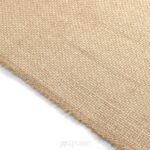A soffit is an essential component of any home’s construction, often overlooked yet playing a vital role in protecting and ventilating your property. Understanding what a soffit is and its functions can help you appreciate its importance and make informed decisions about your home’s exterior.
Soffits serve several critical purposes, the most important of which is ventilation. Without proper soffit ventilation, heat can become trapped in the attic, leading to a superheated roof. This can cause shingles to deteriorate faster and promote the formation of ice dams during the winter, resulting in water leaks. An overheated attic also increases energy consumption. In addition to heat, soffits prevent the build-up of humidity, which can cause mold, mildew, and wood rot.
Aesthetically, soffits provide a finished appearance to your home’s exterior. Without them, the rafters under the roof’s overhang would be exposed. Soffits are available in various colors, materials, and styles, including smooth and wood-grain finishes, allowing you to create a cohesive and polished look that matches or complements your home’s exterior. For example, if you install fiber cement siding with a wood-grain finish, you might consider a matching fiber cement soffit. While soffits can be any color, many homeowners choose white or a color that matches their trim for the best look.
Another practical reason for installing a soffit is to protect the underside of your roof and roof deck from the elements. While the soffit itself can be made of various materials and finished to enhance its protective qualities, the roof deck is more vulnerable. Soffits keep damaging moisture and insects away from this critical area, preventing wood rot, mold, and other problems that can lead to roof failure over time.
Soffits are crucial for attic ventilation, which is essential for managing utility bills in hot weather and preventing mold growth and ice dam formation in the winter. Perforated or vented soffits allow air to circulate through the attic space, preventing it from becoming superheated. During the summer months, this helps keep your home cooler, allowing you to lower the thermostat. In the winter, maintaining a cool attic prevents condensation and reduces the likelihood of snow melting and refreezing at the roof’s edge, which can lead to ice dams. Properly ventilated soffits can protect your home from damage year-round, as ice dams are a major cause of roof leaks and related damage.
Choosing Your Soffit Material
When installing a new soffit, you have several material options. While some homeowners prefer to match their soffit to their siding, others may choose to install a new soffit independently, such as when replacing a roof or repairing damage to the existing soffit.
The type of soffit you choose is important to your home’s appearance and function. Wood and vinyl are commonly used materials, but both have drawbacks. Wood requires frequent scraping and painting and may need periodic replacement due to rotting or warping. Vinyl can discolor easily and may warp in hot weather, resulting in increased maintenance.
Fiber cement soffits offer aesthetic appeal without the maintenance issues of wood or vinyl. These soffits are available in smooth and wood-grain finishes, as well as vented and unvented options, allowing you to select the best fit for your home. They also come in a wide range of colors, making it easy to coordinate with your siding and trim for a cohesive and appealing look.
Invest in a Quality Soffit
The soffit may be a small part of your home’s exterior, but it is a crucial component. By investing in a quality soffit, such as a fiber cement soffit, you can ensure that your home is protected, ventilated, and aesthetically pleasing for years to come. Treat this area with the care it deserves to complete your exterior design.
